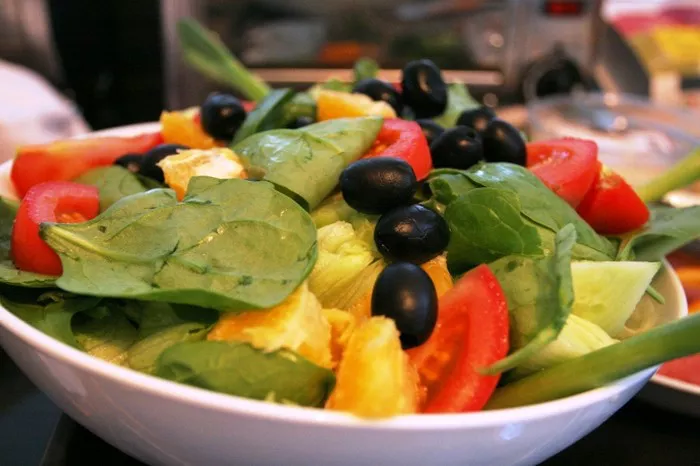Weight Watchers, now known as WW, has been a prominent and trusted name in the weight loss industry for decades. Among its various programs, the Purple Plan has gained significant popularity as a flexible and effective approach to shedding pounds and maintaining a healthy lifestyle. This plan is designed to help individuals make informed and sustainable food choices while still enjoying a wide variety of delicious meals. In this extensive essay, we’ll delve deep into what the Weight Watchers Purple Plan entails, exploring its key features, the science behind its methodology, how it assigns values to different foods, the types of foods that are emphasized or restricted, practical tips for following the plan successfully, and real-life experiences of those who have adopted it. By the end, you’ll have a thorough understanding of whether the Purple Plan could be the right weight loss solution for you.
The Basics of the Weight Watchers Purple Plan
Weight Watchers has a long history of evolving its programs to meet the changing needs and preferences of its members. The Purple Plan is one of the more recent iterations, developed based on extensive research into nutrition, behavior change, and successful weight management strategies. It builds upon the foundational principles of the brand, which have always focused on creating a balanced and personalized approach to weight loss. Over time, as understanding of dietary science has advanced, the Purple Plan incorporates the latest knowledge about which foods are most beneficial for weight control and overall health.
How It Differs from Other WW Plans: The Weight Watchers Purple Plan stands out when compared to its counterparts like the Green Plan and the Blue Plan. While all these plans aim to help people lose weight, they do so by using different systems to assign point values to foods. The Purple Plan is characterized by its relatively generous allocation of zero-point foods. These are foods that you can eat without having to track or count points within certain limits, making it a bit more flexible in terms of meal planning compared to other options. For example, on the Green Plan, the list of zero-point foods might be more limited, and on the Blue Plan, there’s a different balance of zero-point and point-assigned foods. This distinction gives the Purple Plan its unique appeal for those who want a bit more freedom in their food choices while still adhering to a structured weight loss program.
The Point System in the Purple Plan
Understanding Points: The core concept of the Purple Plan, like other Weight Watchers plans, is the use of points to guide food consumption. Points are assigned to foods based on several factors including their calorie content, saturated fat, sugar, and protein levels. Essentially, foods that are higher in calories, saturated fat, and sugar will have more points, while those that are lower in these aspects and higher in protein or fiber may have fewer points. This system is designed to help members make conscious decisions about what they eat. For instance, a slice of cheesecake from a bakery, which is high in calories and saturated fat, would likely have a significant number of points, whereas a bowl of fresh strawberries would have zero points as they are low in calories and rich in fiber and other beneficial nutrients.
Calculating Points: Weight Watchers uses a proprietary algorithm to calculate the point values of foods. While the exact formula isn’t publicly disclosed to prevent manipulation of the system, it generally takes into account the energy density of the food (calories per gram), along with its macronutrient composition. However, members don’t have to calculate points from scratch for every food they eat. WW provides a comprehensive database, accessible through its app or website, where you can simply search for a food item and find its assigned point value. Additionally, many packaged foods now have the WW point value listed on the label, making it extremely convenient for users to stay on track with their daily point allotment.
Zero-Point Foods on the Purple Plan
The List of Zero-Point Foods: The Purple Plan’s zero-point foods are a significant aspect that sets it apart. These include a wide variety of fruits and vegetables, which are rich in vitamins, minerals, fiber, and antioxidants. Examples are apples, bananas, oranges, broccoli, spinach, tomatoes, and carrots. Lean proteins like skinless chicken breast, turkey breast, fish (such as salmon, tuna, and cod), and eggs are also zero-point foods. Additionally, non-starchy vegetables like cucumbers, zucchini, and bell peppers are on the list. Legumes like beans, lentils, and chickpeas are another important category of zero-point foods. This extensive list allows for a diverse and filling diet. For instance, you could start your day with a bowl of oatmeal with berries (zero-point fruits) and a side of scrambled eggs (zero-point protein), knowing that you’re not using any of your daily points yet.
Benefits of Zero-Point Foods: Zero-point foods play a crucial role in promoting satiety and healthy eating habits. Since you can eat them without having to worry about using up your points, they encourage you to fill up on nutritious options. Fruits and vegetables, for example, are high in water content and fiber, which means they take up space in your stomach and keep you feeling full for longer. Lean proteins are essential for maintaining muscle mass during weight loss, and legumes provide both protein and fiber. By incorporating these zero-point foods into your meals and snacks regularly, you can reduce cravings for higher-point, less healthy foods and stay satisfied throughout the day, which is key for adhering to the weight loss plan.
Portion Limits for Zero-Point Foods: While many zero-point foods can be eaten freely, there are some portion limits to keep in mind. For example, while you can enjoy multiple servings of fruits and vegetables throughout the day, if you were to consume an extremely large quantity of a particular food, it might still impact your weight loss progress. The idea is to eat these foods in moderation even though they don’t have a point value assigned. For lean proteins, there are also general guidelines for appropriate portion sizes. For instance, a serving of chicken breast might be considered around 3 to 4 ounces as a standard portion for a meal. This helps ensure that you’re not overeating even with these zero-point options and are maintaining a calorie deficit for weight loss.
Foods with Point Values on the Purple Plan
High-Point Foods to Limit: Certain foods on the Purple Plan will have higher point values due to their composition. Processed and fried foods are typically in this category. For example, a bag of potato chips is high in calories and often contains a significant amount of salt and unhealthy fats, so it would carry a relatively large number of points. Sugary drinks like soda and many fruit juices with added sugar also fall into this group. A 12-ounce can of regular soda can have a surprisingly high number of points because of its high sugar content. Additionally, fatty cuts of meat, such as prime rib or pork belly, which are rich in saturated fat, will have more points compared to leaner cuts. These high-point foods should be limited as they can quickly use up your daily points allowance and may not provide much in the way of satiety or nutrition.
Moderate-Point Foods and Their Role: There are also foods that fall into the moderate-point range. These include items like whole wheat bread, which has more calories and carbohydrates than some of the zero-point foods but also offers fiber and other nutrients. A slice of whole wheat bread might have around 2 to 3 points depending on the brand and specific formulation. Low-fat dairy products like skim milk or low-fat yogurt are another example. They provide protein and calcium but have a small number of points due to their calorie content. These moderate-point foods can be incorporated into your diet in moderation to add variety and meet your nutritional needs while still staying within your daily and weekly point limits. For instance, having a slice of whole wheat bread with a thin spread of low-fat cream cheese (which also has a few points) can make for a satisfying breakfast or snack option.
Conclusion
In conclusion, the Weight Watchers Purple Plan is a versatile and effective weight management program that offers personalized nutrition guidance and support to help individuals achieve their health and fitness goals. This plan focuses on balance, variety, and moderation, allowing participants to enjoy a wide range of foods while still losing weight.
Related Topics:
























